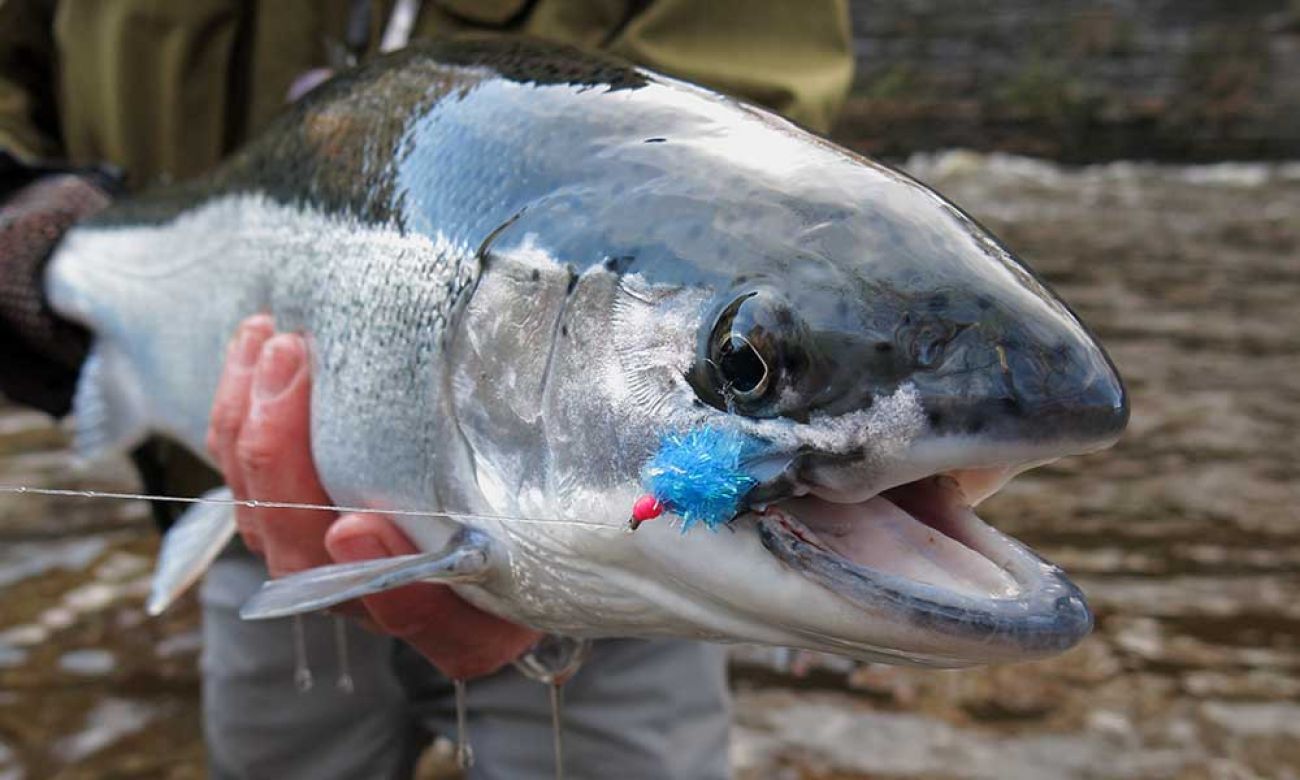Steelhead struggle in some Michigan waters. Will a catch limit help?

LANSING—Decreasing steelhead populations in some Michigan tributaries have prompted the state Natural Resources Commission to consider reducing the bag limit for anglers in those areas from three to one, but fisheries experts are not sure it will help.
The NRC considered an amendment Wednesday to reduce the bag limit for the prized game fish in Bear Creek, Manistee River, Pere Marquette, Muskegon River, and Carp River before ultimately tabling a decision to its December meeting. Introduced by Commissioner David Nyberg, who was not present Wednesday, the amendment would limit catches to protect dwindling steelhead populations.
Related:
- Record elk hunting applications fuel conservation efforts
- Deer expert: Expect fewer hunters in the Michigan woods this year
- As hunting wanes, fear of a southern Michigan deer invasion grows
The steelhead population in Lake Michigan has steadily declined from 3.5 million in 2011 to just under 3 million in 2018, according to the Department of Natural Resources. But limiting anglers' catch opportunities may not support the state's struggling steelhead populations in some areas, according to biologists with the state’s Fisheries Division, who presented at the NRC's meeting. The presenters said declining water quality could be driving fish populations down.
Steelhead populations at Little Manistee Weir dropped significantly from just over 6,000 in 2002 to just under 2,000 in 2020. Jay Wesley, Lake Michigan basin coordinator for the Fisheries Division, said the decrease in fish correlates with increasing water clarity, a sign that the lakes lack the plankton and other small organisms that feed fish.
"This is why habitats do far more for fish populations than stocking and regulations," Wesley said.
Michigan began stocking steelhead populations in 1876 and eventually established wild runs. Today, wild steelhead populations are consistent, while stocking populations are gradually declining.
According to Jory Jonas, research biologist for the Fisheries Division, another area of concern is steelhead mortality in streams which could be caused by changing water quality and aggressive steelhead breeding behaviors. Jonas said in streams, the steelhead mortality rate is four to six times that of populations in Lake Michigan.
"The stress of spawning takes its toll, and it's rare for steelhead to spawn more than two times. It does occur, but it is not common," Jonas said.
Maintaining current steelhead populations does not require immediate action, such as reducing bag limits, according to Todd Grischk, assistant chief of the Fisheries Division. According to the DNR, only 58 percent of general anglers catch one steelhead a season, and 24 percent catch more than two. Wesley said many anglers generally do not harvest steelhead, preferring to catch and release.
Some fishing advisory council members say a tightened bag limit raises additional concerns among anglers. Randy Terrian, part of the Lake Huron Citizen's Fisheries Advisory Committee, said he is worried reducing bag limits would frustrate anglers, deterring them from reporting catches and communicating with fisheries.
"Angler observations are important," Terrian said. "This would sour them, and pretty soon, you won't get that cooperation."
According to the DNR, a handful of states have contemplated similar regulatory changes regarding steelheads. Jim Bos, a Pere Marquette Watershed Council member, said he is worried this may cause more anglers to frequent Michigan since some states have implemented no-kill restrictions on steelheads.
"That demand is going to transfer to Michigan, and looking forward, we have to protect the fish from it," Bos said. "Putting restrictions on the fish will have no risks. The recreation opportunity is still there."
In addition to reducing steelhead bag limits, the NRC will consider the following orders at its Dec. 9 meeting:
- A fishery order to keep Saginaw and Bay counties' walleye seasons open year-round
- An order to ban firearms in an open area in Benzie County as tensions around increased shooting near residential areas rise
Michigan Environment Watch
Michigan Environment Watch examines how public policy, industry, and other factors interact with the state’s trove of natural resources.
- See full coverage
- Subscribe
- Share tips and questions with Bridge environment reporter Kelly House
Michigan Environment Watch is made possible by generous financial support from:
Our generous Environment Watch underwriters encourage Bridge Michigan readers to also support civic journalism by becoming Bridge members. Please consider joining today.
See what new members are saying about why they donated to Bridge Michigan:
- “In order for this information to be accurate and unbiased it must be underwritten by its readers, not by special interests.” - Larry S.
- “Not many other media sources report on the topics Bridge does.” - Susan B.
- “Your journalism is outstanding and rare these days.” - Mark S.
If you want to ensure the future of nonpartisan, nonprofit Michigan journalism, please become a member today. You, too, will be asked why you donated and maybe we'll feature your quote next time!






